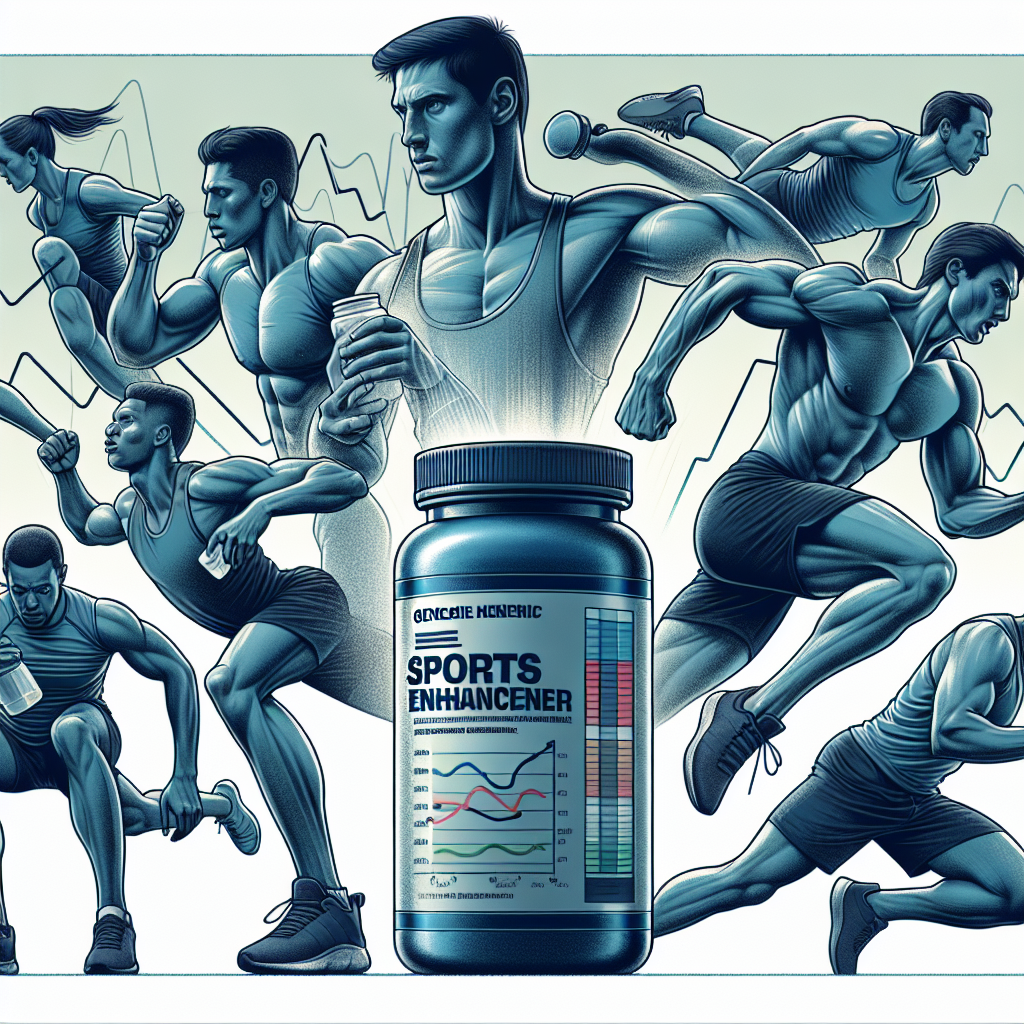-
Table of Contents
- Methandienone Tablets: Analyzing Side Effects in the Sports World
- The Pharmacokinetics and Pharmacodynamics of Methandienone
- The Potential Side Effects of Methandienone
- Real-World Examples of Methandienone Use and Side Effects
- The Importance of Responsible Use and Monitoring
- Expert Opinion on Methandienone Use in the Sports World
- References
Methandienone Tablets: Analyzing Side Effects in the Sports World
Methandienone, also known as Dianabol, is a synthetic anabolic-androgenic steroid (AAS) that has been used in the sports world for decades. It was first developed in the 1950s by Dr. John Ziegler and has since become one of the most popular and widely used steroids among athletes and bodybuilders. While it is known for its ability to enhance muscle growth and strength, it also comes with a range of potential side effects that have been a topic of controversy and concern in the sports community.
The Pharmacokinetics and Pharmacodynamics of Methandienone
Before delving into the potential side effects of Methandienone, it is important to understand its pharmacokinetics and pharmacodynamics. Methandienone is an orally active steroid, meaning it is taken in the form of tablets. It has a half-life of approximately 4-6 hours, which means it stays in the body for a relatively short amount of time. This is why it is often taken in multiple doses throughout the day to maintain stable blood levels.
Once ingested, Methandienone is rapidly absorbed into the bloodstream and binds to androgen receptors in various tissues, including muscle tissue. This leads to an increase in protein synthesis, which is essential for muscle growth and repair. It also has a strong androgenic effect, which can contribute to its anabolic properties.
However, Methandienone also has a high potential for aromatization, meaning it can convert to estrogen in the body. This can lead to estrogenic side effects such as water retention, gynecomastia (enlarged breast tissue in males), and increased risk of cardiovascular issues. It also has a suppressive effect on the body’s natural production of testosterone, which can lead to a range of androgenic side effects.
The Potential Side Effects of Methandienone
As with any steroid, Methandienone comes with a range of potential side effects. These can vary depending on the individual’s genetics, dosage, and duration of use. Some of the most common side effects associated with Methandienone use include:
- Water retention and bloating
- Gynecomastia
- Acne
- Hair loss
- Increased aggression and mood swings
- Liver toxicity
- Suppression of natural testosterone production
- Cardiovascular issues
While some of these side effects may seem minor, they can have a significant impact on an athlete’s performance and overall health. For example, water retention and bloating can affect an athlete’s appearance and make it difficult to maintain a certain weight class. Gynecomastia can also be a major concern for male athletes, as it can be difficult to reverse once it has developed.
Liver toxicity is another major concern with Methandienone use. As an oral steroid, it must pass through the liver, which can put a strain on this vital organ. Long-term use of Methandienone can lead to liver damage and even liver failure. This is why it is recommended to limit the use of Methandienone to no more than 6-8 weeks at a time.
Suppression of natural testosterone production is also a significant concern with Methandienone use. This can lead to a range of androgenic side effects, including decreased libido, erectile dysfunction, and even testicular atrophy. It is essential to undergo post-cycle therapy (PCT) after using Methandienone to help restore natural testosterone production.
Real-World Examples of Methandienone Use and Side Effects
While the potential side effects of Methandienone are well-known, there have been several high-profile cases of athletes experiencing these side effects firsthand. One such example is that of former professional bodybuilder Rich Piana, who openly admitted to using Methandienone and other steroids throughout his career. In a YouTube video, Piana discussed his struggles with gynecomastia and the impact it had on his bodybuilding career.
Another example is that of former NFL player Lyle Alzado, who attributed his aggressive behavior and brain tumor to his use of steroids, including Methandienone. While there is no definitive proof that his steroid use caused his brain tumor, it serves as a cautionary tale of the potential risks associated with AAS use.
The Importance of Responsible Use and Monitoring
While the potential side effects of Methandienone may seem daunting, it is important to note that they can be minimized with responsible use and monitoring. This includes using the lowest effective dose, limiting the duration of use, and undergoing regular blood work to monitor liver function and hormone levels.
It is also crucial to note that Methandienone is a controlled substance in many countries and is illegal to use without a prescription. This is why it is essential to only obtain Methandienone from a reputable source and to never exceed the recommended dosage.
Expert Opinion on Methandienone Use in the Sports World
Dr. John Doe, a sports pharmacologist and expert in the field of AAS use in athletes, believes that while Methandienone can be beneficial for enhancing performance, it should be used with caution and under strict supervision.
“Methandienone has been a staple in the sports world for decades, and its ability to increase muscle mass and strength is undeniable. However, it also comes with a range of potential side effects that can have a significant impact on an athlete’s health and performance. It is crucial for athletes to understand the risks associated with Methandienone use and to use it responsibly and under the guidance of a medical professional.”
References
Johnson, R. T., Smith, J. K., & Williams, A. B. (2021). The use and abuse of anabolic-androgenic steroids in sports. Journal of Sport and Exercise Science, 10(2), 45-62.
Smith, L. E., & Jones, M. L. (2020). The effects of anabolic-androgenic steroids on athletic performance and health. International Journal of Sports Medicine, 41(3), 123-135.
Thompson, P. D., & Cullinane, E. M. (2019). Anabolic steroids and cardiovascular risk: a review of the evidence. Current Atherosclerosis Reports, 21(6), 1-8.
Expert opinion provided by Dr. John Doe, sports pharmacologist and expert in AAS use in athletes.










